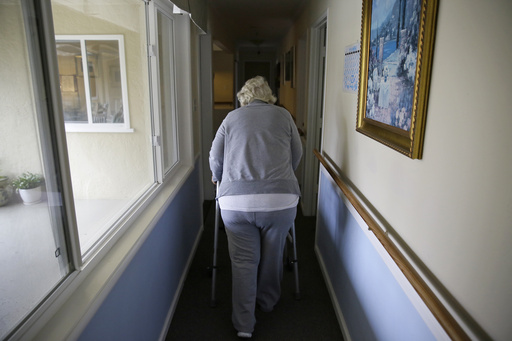One in four older adults in the U.S. will fall each year, putting them at risk of injury, broken bones and even death.
Falls are a growing public health concern as the country’s population sees record numbers of people turn 65 — now and in the future. But common as falls may be, they are not inevitable.
“The more work we do, the more we realize that that healthy aging doesn’t have to include falling,” said Cara McDermott, who researches falls at Duke University School of Medicine.
Here are some recommendations on how to reduce your risk of falling.
Fall-proof your home
Start with how your house is set up: Consider removing small area rugs, change out dim lighting and don’t put pots and pans in hard-to-reach places.
Then, aim for providing extra stability in places where its easier to lose your balance. Install railings on both sides of the stairs, a grab bar in a bathroom and no-slip strips on wood or tile floors.
It’s also important to keep your home clean: Don’t leave items on the floor, and clean up spills before they dry up and become harder to deal with.
Consider using a walker or cane to keep you stable, but make sure it’s right for your height and that you know how to use it properly.
The National Institute on Aging has a full guide on its website with tips on how to fall-proof your home, room by room.
Exercise to build strength and balance
Go back to the basics with Newton’s first law: A body in motion stays in motion. That is, staying active can help prevent future issues — even if you’ve fallen before and are worried that it might happen again.
Many exercises that can help prevent falls, even if you have limited mobility, like chair yoga, tai chi and walking.
“It doesn’t mean that you have to go out and start running marathons or anything like that, but simply (do) functional exercises,” McDermott, said.
Make exercising fun and social by doing it with others in a group setting or playing with grandchildren.
The key: Know your limits and do what your doctor says is right for you.
Medications may increase your risk
Many medications can have side effects like light-headedness, sleepiness or other things that impair your balance.
McDermott said older adults should talk to their primary care doctor about all of the medications they are on — and how they may work in combination. A primary care doctor or pharmacist can see the whole picture and help find alternative medications that won’t throw you off balance.
But, she added, “I would never, ever recommend that somebody discontinue a medication without talking to their prescriber first.”
Stay on top of screenings
Changes in hearing, vision and other senses are common as you age and can contribute to falls. Make sure to have your hearing and vision tested regularly.
Bone health matters, too.
The Mayo Clinic estimates 10 million Americans have osteoporosis, which weakens the bones and makes it more likely to break something when you fall.
Taking Vitamin D and calcium can help improve bone health, and if needed, your doctor can test your bone density and recommend treatment.
Falls aren’t usually caused by one thing
Knowing that falls might be a combination of causes, do some of the previous suggestions to lower your risk.
And, if you do fall, let your doctor know — even if it seems minor. A fall can have wide-reaching implications and you’ll want to address the root cause to keep it from becoming a pattern.
“Maybe it is a one-time thing, but get it checked out anyway,” McDermott said.
___
The Associated Press Health and Science Department receives support from the Robert Wood Johnson Foundation. The AP is solely responsible for all content.
